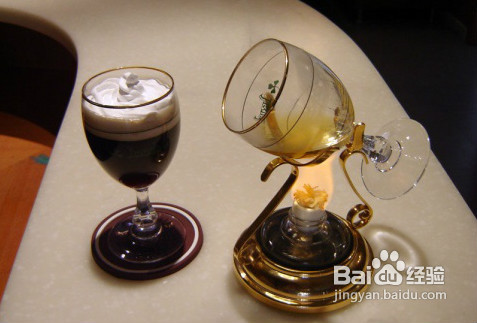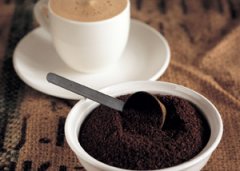A brief introduction to the cultivation of fine coffee beans in Burundi with mellow taste, geographical location, climate and altitude

There are many variables that affect the quality of the final beans. For example, each mountain has a different microclimate, which in turn affects the growth, picking and handling of coffee fruits, and varies from day to day. Nathan James Johnston, the boss of Cartel Coffee Roasters in Australia, said: "working with Long Miles, we can know exactly where, when and by whom the coffee is picked, which means great sustainability to us.
"Sustainability" is an old topic in the boutique coffee industry, but most coffee companies still want to buy the best coffee at the lowest price, which is not sustainable for local growers. What can we do to solve this problem?
First of all, we need to understand one thing: for most Burundian families, they do not use the money earned from coffee to buy the most basic needs of life, such as food. They grow all the food in their own yard. On average, each family earns only $100 a year, which is usually spent on gas, home maintenance and tuition fees
The cultivation of Arabica coffee trees in Cameroon (Cameroon) began in 1913 as the Blue Mountain Coffee from Jamaica, but the country also produces large quantities of Robbins coffee. The quality and characteristics of Cameroon coffee is similar to that of coffee from South America. The best coffee in the country comes from Bamileke and Bamoun in the northwest. Here, it also grows some giant coffee beans and bean-shaped berry coffee.
Since the late 1980s, coffee production in Cameroon has declined, from 1.8 million bags in 1987 to 1.1 million bags in 1990, while Arabica coffee has dropped from 400000 bags to 200000 bags in the same period. Today, due to the strengthening of the management of the State Coffee Supervision Bureau (National Coffee Supervisory Agency), the output and quality of coffee may pick up.
Lundi's coffee was first brought in by the Germans in the 1900s; they found that bourbon was the most suitable for growing in the local climate, which is usually a "tropical" plateau climate with a very large temperature difference between day and night. However, due to the suspension of investment in coffee research, bourbon has become the only coffee variety left in the country and has been treated with "full washing".
The development of boutique coffee needs continuous breakthrough and innovation. In 2014, Long Miles Coffee Project (LMCP) began to use sun treatment and honey treatment for their coffee, which made professional coffee cup testers overjoyed at the taste of the coffee. According to Miss Gu Qinru, head of Latorre & Dutch Coffee Asia, "usually we can drink citrus and plum flavors in washed Burundian coffee. And this is our first cup of Burundian coffee treated with sun and honey. Its flavor turns into more complex strawberries, grapes and tropical fruits. It seems that the way it is handled is crucial to the taste of coffee.
Flavor: mellow taste, rich aroma, excellent acidity
Suggested baking method: medium to deep baking
★★: good
Burundian coffee market:
Most of Burundi's coffee products are exported to the United States, Germany, Finland and Japan.
Violet fragrance, light acidity, smooth taste, saturated aroma,
Rich and lasting through the introduction of the Belgian, Bloomberg began to grow coffee in 1930. The varieties are mostly bourbon varieties like neighboring Luanda, and coffee grows on mountains ranging from 1750 to 2000 meters above sea level.
The first Arabica coffee tree in Bloomberg was introduced by Belgium in the 1930s.
More than 800000 of Bloomberg families depend on coffee cultivation for a living, mostly in small-scale coffee plantations
Planting at intervals with other crops, artificial planting, without mechanized equipment, most of the varieties of coffee trees are Bourbon and Jackson and Mibirigy, which also belong to the Bourbon system, and the treatment methods are washing and semi-washing.
In the past, it was mostly exported to Belgium, Germany, the Netherlands, Japan, Australia and the United States.
Coffee export is already an important economic source of Bloomberg, which is mainly different from the famous coffee producing areas.
The chaos of Burundian coffee has been going on for a long time, with a large number of old and new raw beans mixed together, making this coffee unsuitable for grading. This coffee is rough but mild, and has characteristics similar to Kenyan coffee. The flavor is sweet and fruity, with a slightly spicy finish.
Traceability is a common problem faced by coffee growers, raw bean buyers and coffee roasters. There are currently about 3500 families working for LMCP. Production harvesting areas are distributed on eight different hilltops and two processing plants-Bukeye (operational in 2013) and Heza (operational in 2014).
Important Notice :
前街咖啡 FrontStreet Coffee has moved to new addredd:
FrontStreet Coffee Address: 315,Donghua East Road,GuangZhou
Tel:020 38364473
- Prev

Almond aroma of Burundi fine coffee beans varieties planted market price profile
This batch belongs to Bourbon seed micro batch [Champion Processing Plant in Burundi] Located at the peak of Maldadi, Panjia Processing Plant in Kabye District, Kayanza Province, with a very high altitude, even more than 2000 meters above the mountain, fertile soil, gravel soil, very suitable for coffee growth, recognized as the best coffee processing plant in Burundi. Bean Parameters: Country: Burundi Growth: 1750 km
- Next

Burundi fine coffee beans with excellent acidity
Burundi coffee characteristics Flavor description Taste treatment Method of production Region Variety grind Introduction Anchor point Burundi coffee was introduced by Belgian colonists in 1930. Unfortunately, many of these farms are located on the border with war-torn Rwanda, putting pressure on coffee production. Burundi coffee origin: Burundi (Burundi) coffee present
Related
- Detailed explanation of Jadeite planting Land in Panamanian Jadeite Manor introduction to the grading system of Jadeite competitive bidding, Red bid, Green bid and Rose Summer
- Story of Coffee planting in Brenka region of Costa Rica Stonehenge Manor anaerobic heavy honey treatment of flavor mouth
- What's on the barrel of Blue Mountain Coffee beans?
- Can American coffee also pull flowers? How to use hot American style to pull out a good-looking pattern?
- Can you make a cold extract with coffee beans? What is the right proportion for cold-extracted coffee formula?
- Indonesian PWN Gold Mandrine Coffee Origin Features Flavor How to Chong? Mandolin coffee is American.
- A brief introduction to the flavor characteristics of Brazilian yellow bourbon coffee beans
- What is the effect of different water quality on the flavor of cold-extracted coffee? What kind of water is best for brewing coffee?
- Why do you think of Rose Summer whenever you mention Panamanian coffee?
- Introduction to the characteristics of authentic blue mountain coffee bean producing areas? What is the CIB Coffee Authority in Jamaica?

